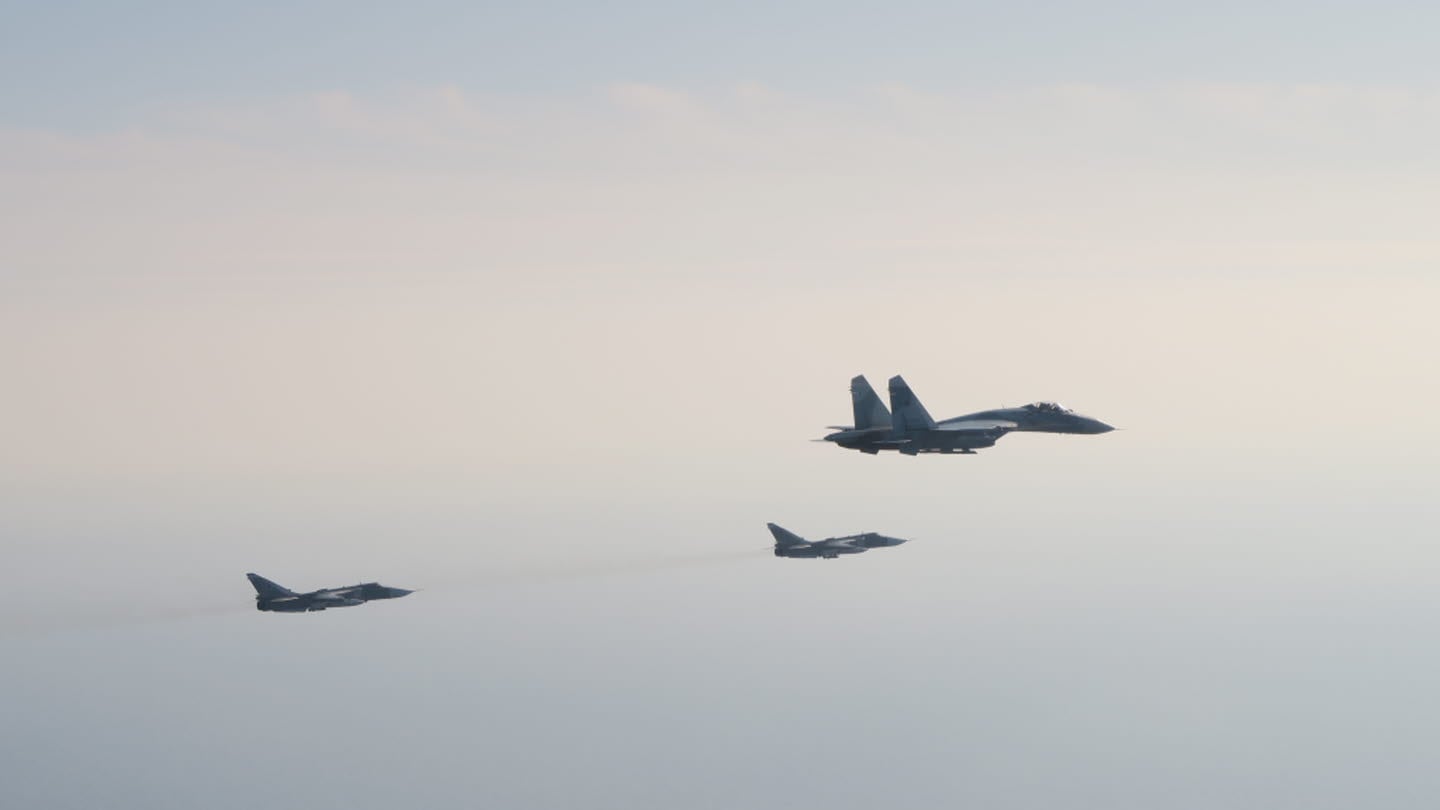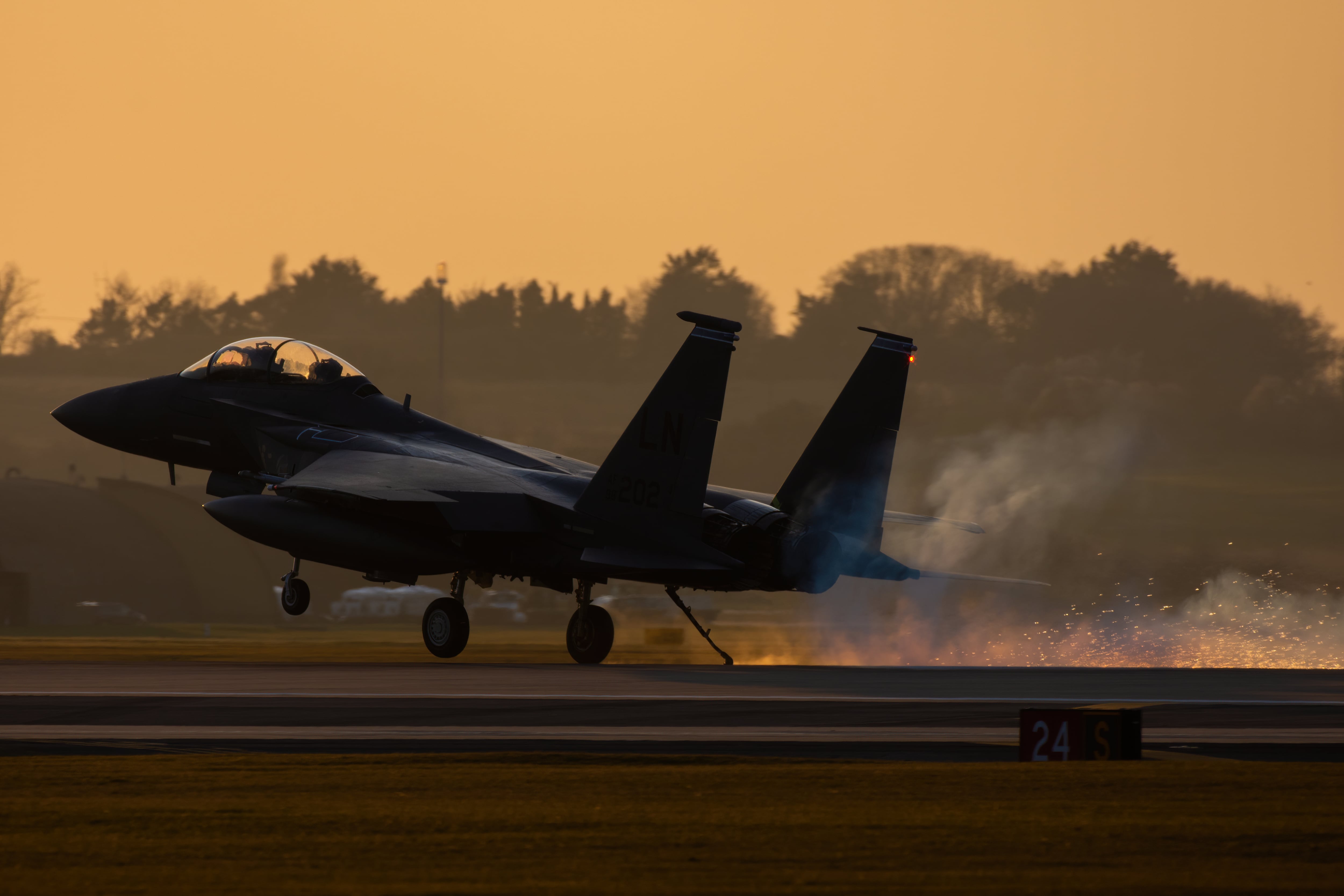At least three American F-15 fighter jets made emergency landings at England’s RAF Lakenheath this week, including one previously unreported incident Thursday evening.
Faulty hydraulic systems forced two F-15s to declare emergencies on Monday, and both managed to safely land without relying on their brakes, according to the U.S. Air Force.
British aviation photographer Tommy Boxall provided Air Force Times with pictures of another jet landing with the arresting cable during a third in-flight incident on Thursday, too. It’s unclear if that F-15E Strike Eagle suffered from hydraulic problems as well, though one photo appears to show its air intake vents pointing in different directions — a sign of a mechanical failure.
RELATED

A spokesperson for the 48th Fighter Wing at Lakenheath confirmed Monday’s events but did not respond to further questions on Thursday’s in-flight emergency by press time Friday.
Problems with the hydraulic system known as “Utility A” are “fairly common when it comes to aircraft maintenance” at Lakenheath, 48th Fighter Wing spokesperson Staff Sgt. Dhruv Gopinath told Air Force Times.
Lakenheath last year told the BBC that hydraulic woes were “a standard concern for an almost four-decade-old plane,” according to the BBC.
Both planes that declared emergencies on Monday cut short their training mission and landed safely, according to the BBC, which first reported the twin incidents. No one was hurt.
RELATED

“Utility A” hydraulics run the jet’s brakes, canopy and airflow components that help the plane reach supersonic speeds.
Each of the jets flashed a warning that something was amiss with the Utility A system, Gopinath said. Both pilots followed their emergency protocols and landed the planes by snagging a hook on a cable built into the runway to slow them down — a precautionary measure taken when brakes might fail.
“There were similar hydraulic system indications between both aircraft,” Gopinath said. “However, there does not appear to be [a] common causal relationship between the two events.”
Both F-15s were repaired and returned to service, he added. He didn’t say whether the fighters were older F-15C/D Eagle models designed for air-to-air combat, or slightly younger F-15Es that can take on both airborne and ground threats.
RELATED

“The 48 FW and larger [Air Force] sustainment enterprise regularly study aircraft flying and fleet maintenance data for trends and improvement initiatives,” Gopinath said. “The data from these events will be examined as a part of the regular recurring fleet analysis.”
He did not immediately answer if three in-flight emergencies in one week is unusual for Lakenheath’s F-15 fleet.
The Air Force has confirmed at least three emergencies related to the F-15′s hydraulic system in the past four months at Lakenheath alone. In November 2021, one of the fighters had to duck out of a memorial flyover event on England’s eastern coast when a similar problem occurred mid-flight.
In the past five years, U.S.-owned F-15s have logged 19 accidents that caused at least $600,000 in damages per mishap, according to Air Force Safety Center data. Two people died from fiscal 2017 to 2021.
Rachel Cohen is the editor of Air Force Times. She joined the publication as its senior reporter in March 2021. Her work has appeared in the Washington Post, the Frederick News-Post (Md.), Air and Space Forces Magazine, Inside Defense, Inside Health Policy and elsewhere.




